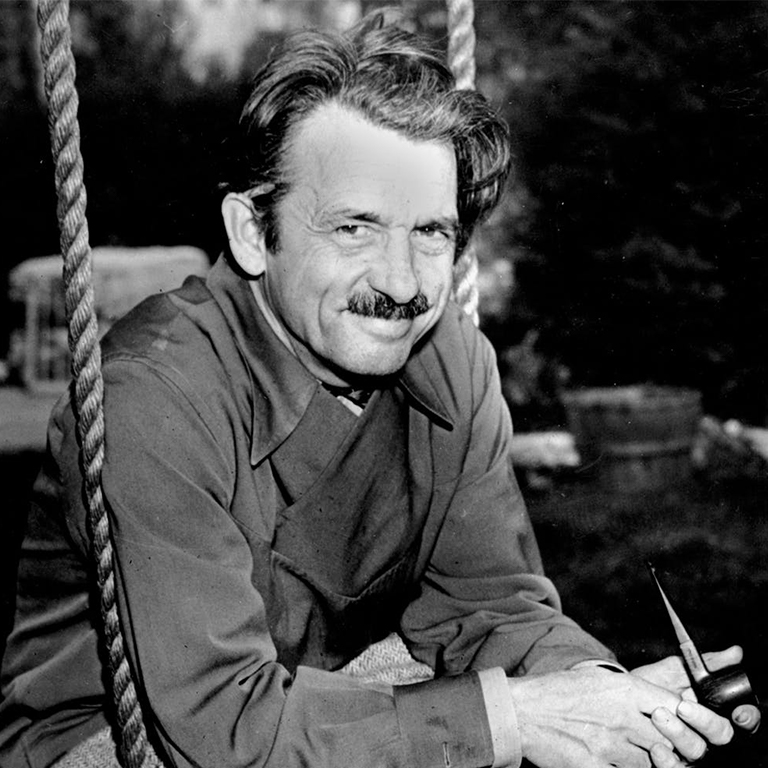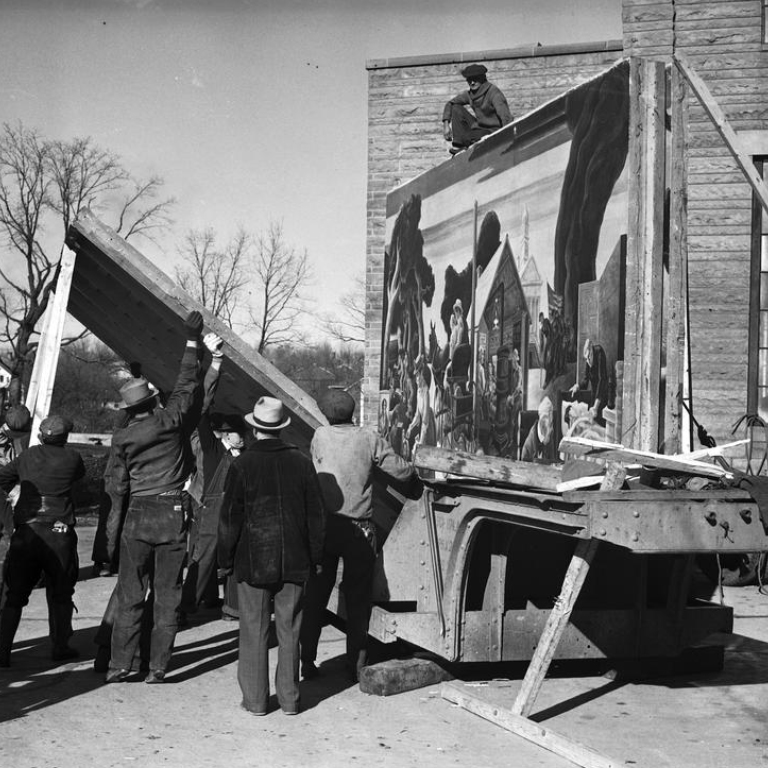The State of Indiana commissioned American painter Thomas Hart Benton to create the Indiana Murals for "A Century of Progress International Exposition," also known as the 1933 Chicago World's Fair.
The continuous mural depicts the state's history—from its earliest indigenous peoples to the Great Depression—via two parallel chronological sequences, one focused on culture and one on industry.



